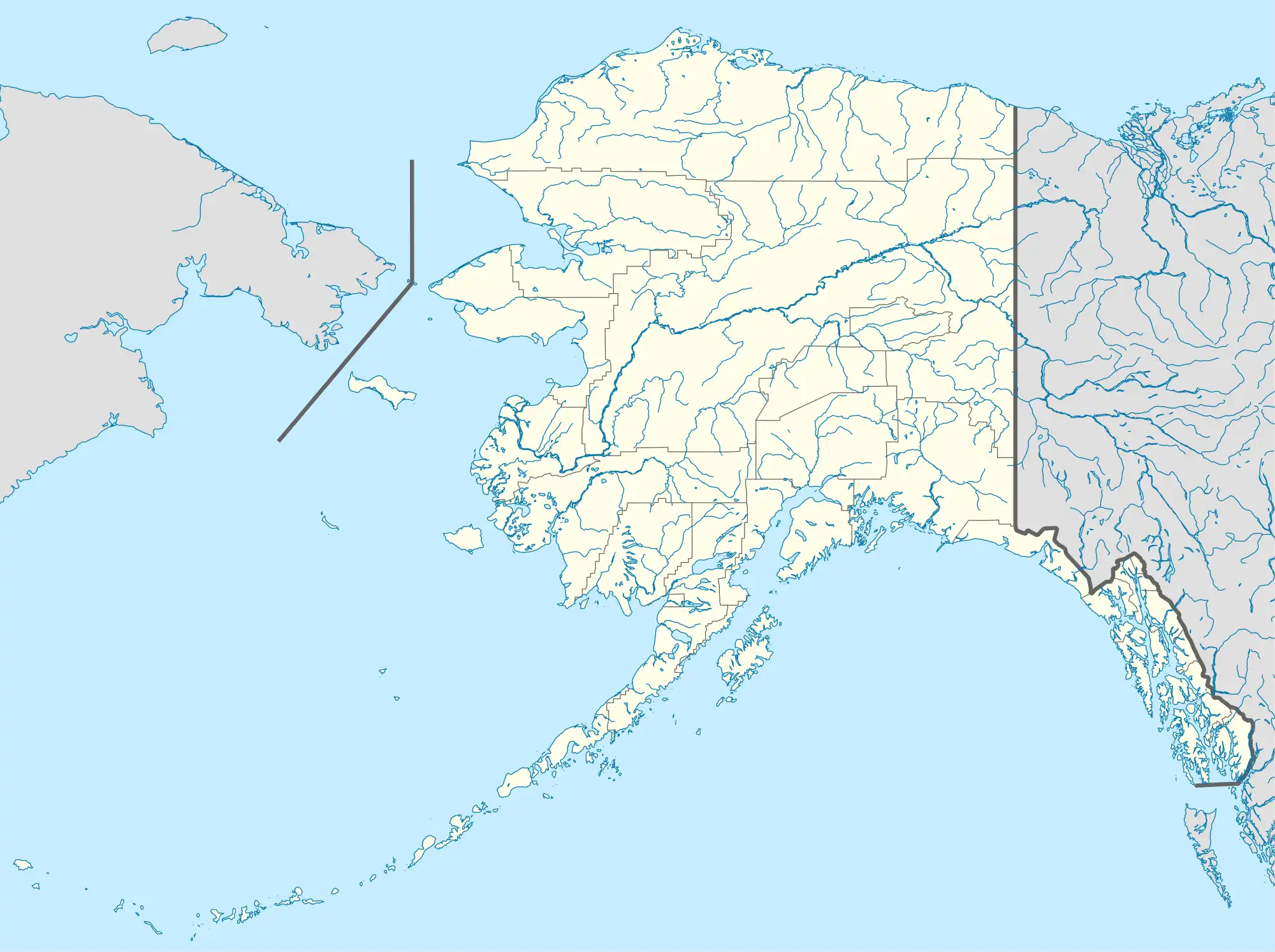Kayak Island
Bering Expedition Landing Site (Eyak: Qe'yiłteh) | |
Alaska Heritage Resources Survey
| |
 | |
| Location | Katalla, Alaska |
|---|---|
| Coordinates | 59°53′40″N 144°29′08″W |
| Built | 1741 |
| NRHP reference No. | 77001542 |
| AHRS No. | XMI-005 |
| Significant dates | |
| Added to NRHP | July 20, 1977[1] |
| Designated NHL | June 2, 1978[2] |
| Designated AHRS | February 2, 1975 |

Kayak Island, (Eyak: Qe'yiłteh) which includes the Bering Expedition Landing Site, is located in the Gulf of Alaska, 100 km (62 mi) SE of Cordova, Alaska Malaspina Coastal Plain, on the eastern edge of Chugach National Forest. It has a land area of 73.695 km2 (28.454 sq mi) and no population.
A brief visit by the Bering Expedition's German naturalist George Steller is among the first contributions to the West's knowledge of the natural and human history of the region.[3][2]
The island was named "Kayak" in 1826 by Lt. Sarychev of the Russian Navy, because of the fancied resemblance of its outline to the Eskimo skin canoe.
Captain James Cook visited the island on May 12, 1778, and buried a bottle with a paper and two small pieces of silver given to him by Dr. Richard Kaye, the chaplain of King George III, for this purpose. Because of this, Capt. Cook gave the name this feature. The 1779 expedition of Spanish explorer Ignacio de Arteaga y Bazán sighted the island about July 16, the feast day of Our Lady of Mt. Carmel (or Carmen), and so named it "Nuestra Senora del Carmen" or "Isla del Carmen."
The Bering Expedition Landing Site was declared a National Historic Landmark in 1978.[2][4]
Cape Saint Elias is located on the southwest end of the island. Mount Saint Elias — about 115 miles to the ENE, and at 18,009 feet (5,489 m) the second highest mountain in both the United States and Canada — was likely named after this cape. The cape is also the site of Alaska's first confirmed tornado, which caused minor damage to the area on November 4, 1959.[5] It was the 50th and last state to confirm their first tornado since 1950.[6]
The Cape St. Elias Light is an important aid-to-navigation located on the island.
See also
References
- "National Register Information System". National Register of Historic Places. National Park Service. January 23, 2007.
- "Bering Expedition Landing Site". National Historic Landmark summary listing. National Park Service. Archived from the original on 2011-06-06. Retrieved 2007-11-19.
- Collins, Henry B. Jr. "Georg Wilhelm Steller". Encyclopedia Arctica. Dartmouth. Retrieved 20 August 2022.
- William S. Hanable (January 15, 1976). "National Register of Historic Places Inventory-Nomination: Bering Expedition Landing Site (AHRS SITE NO. XMI 005)". National Park Service.
{{cite journal}}: Cite journal requires|journal=(help) and Accompanying photos, exterior and interior, from 19. (292 KB) - "Alaska F0". Tornado History Projects. Storm Predicition Center. Retrieved 7 July 2020.
- "All Alaska Tornadoes". Tornado History Projects. Storm Predicition Center. Retrieved 7 July 2020.

.svg.png.webp)